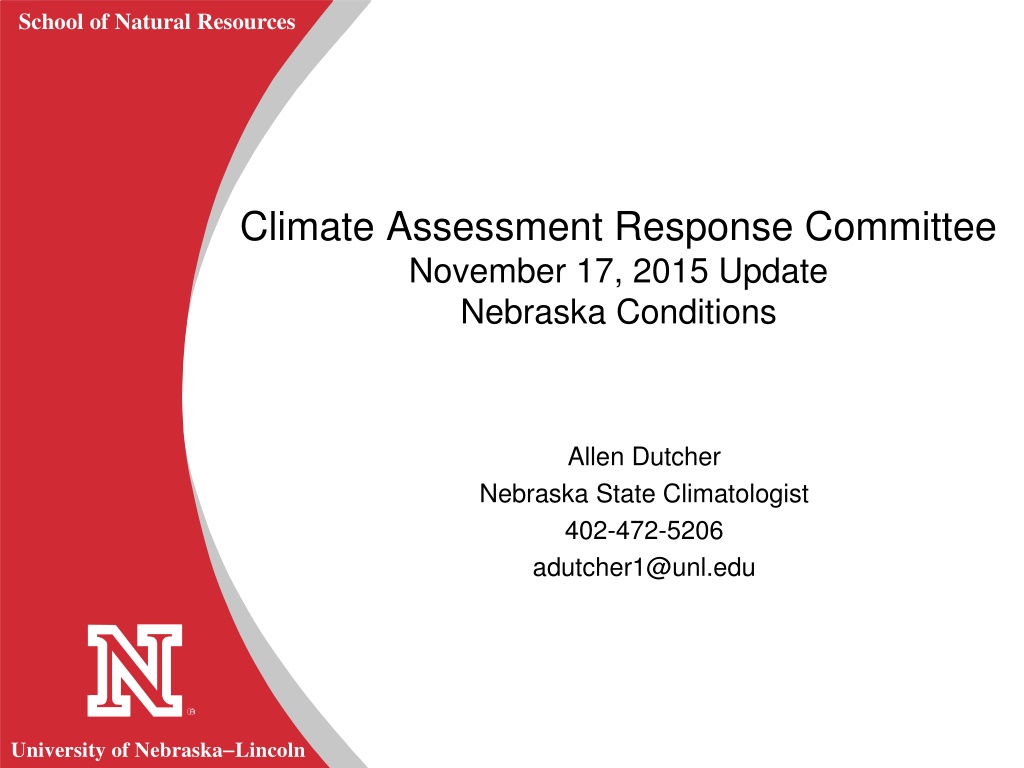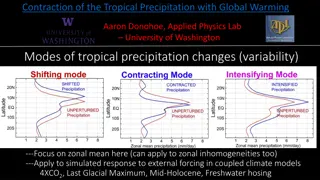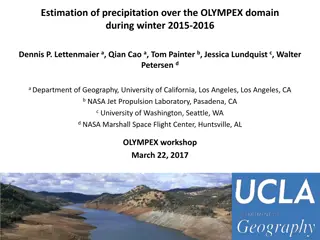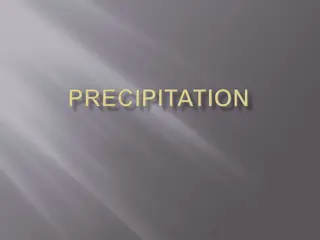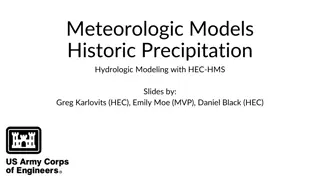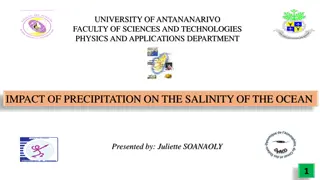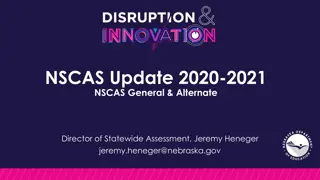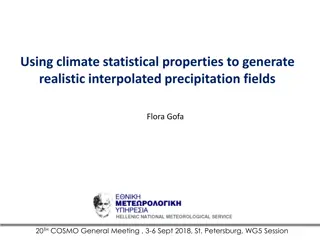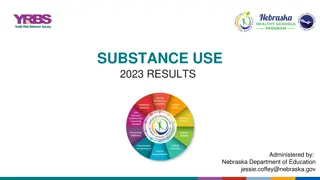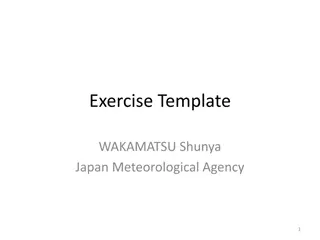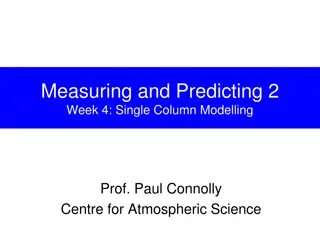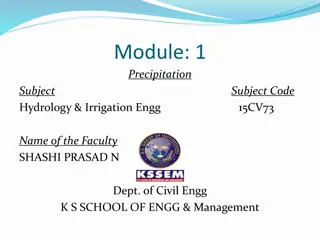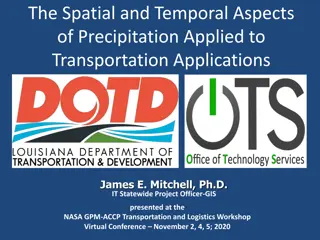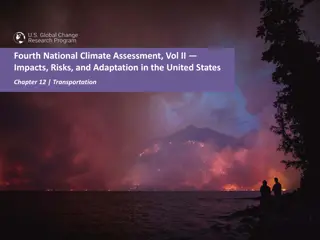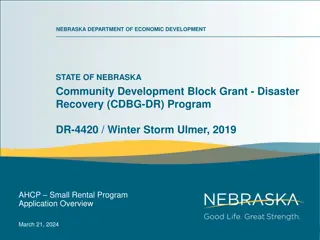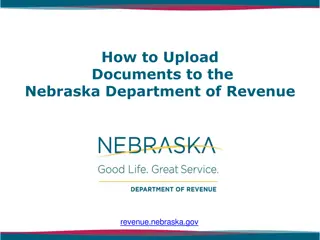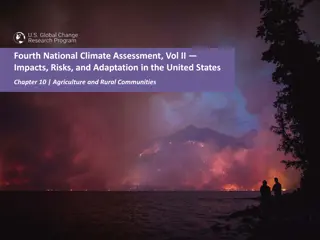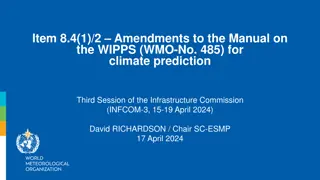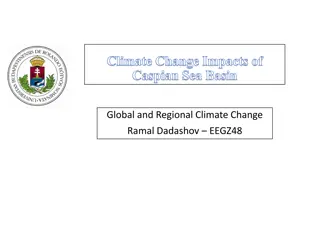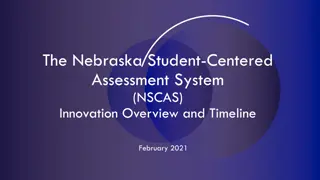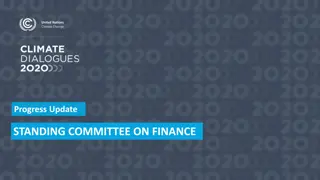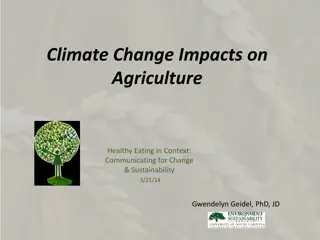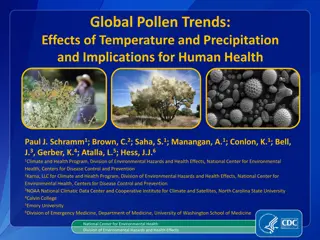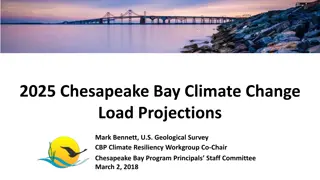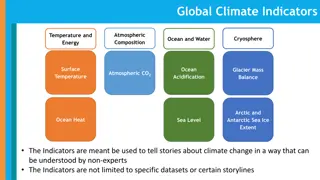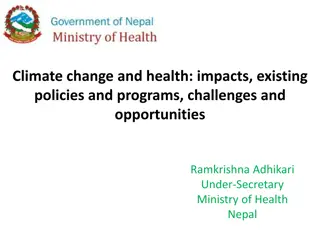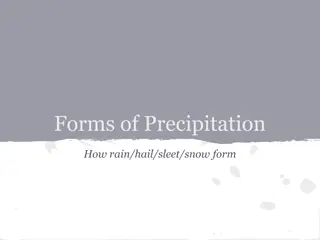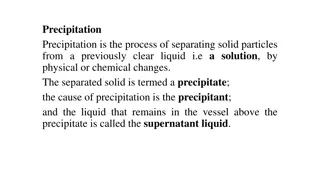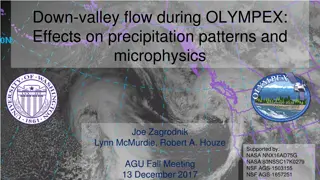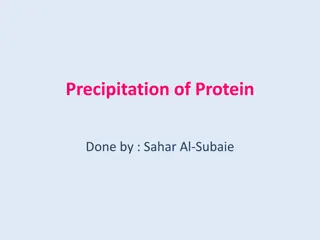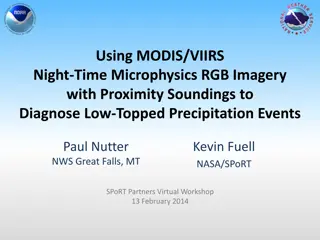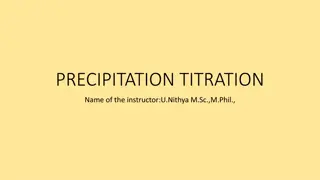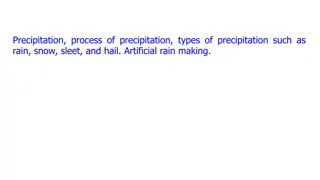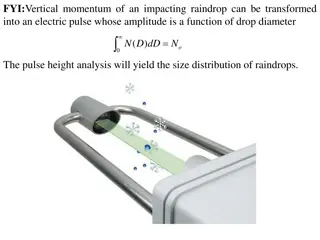Climate Assessment Update: Nebraska Precipitation Trends and Impacts
Nebraska's recent climate assessment reveals varying precipitation trends across different regions. Positive short-term trends in the western part of the state indicate soil moisture recharge, while negative trends in south-central and southeast Nebraska pose challenges. A persisting dry signal for these regions highlights potential hydrological and moisture-related issues. Despite some improvements in certain areas, central Nebraska continues to experience dry conditions. The assessment provides crucial insights into current and future climate impacts on Nebraska's natural resources.
Download Presentation

Please find below an Image/Link to download the presentation.
The content on the website is provided AS IS for your information and personal use only. It may not be sold, licensed, or shared on other websites without obtaining consent from the author. Download presentation by click this link. If you encounter any issues during the download, it is possible that the publisher has removed the file from their server.
E N D
Presentation Transcript
School of Natural Resources School of Natural Resources Climate Assessment Response Committee November 17, 2015 Update Nebraska Conditions Allen Dutcher Nebraska State Climatologist 402-472-5206 adutcher1@unl.edu R R University of Nebraska Lincoln University of Nebraska Lincoln
School of Natural Resources School of Natural Resources Nebraska Precipitation Trend 30 Day Departures R R University of Nebraska Lincoln University of Nebraska Lincoln
School of Natural Resources School of Natural Resources Nebraska Precipitation Trend 60 Day Departures R R University of Nebraska Lincoln University of Nebraska Lincoln
School of Natural Resources School of Natural Resources National Temperature Trend 60 Day Departures R R University of Nebraska Lincoln University of Nebraska Lincoln
School of Natural Resources School of Natural Resources Nebraska Precipitation Trend 90 Day Departures R R University of Nebraska Lincoln University of Nebraska Lincoln
School of Natural Resources School of Natural Resources Nebraska Precipitation Trend 6 Month Departures R R University of Nebraska Lincoln University of Nebraska Lincoln
School of Natural Resources School of Natural Resources Nebraska Precipitation Trend 12 Month Departures R R University of Nebraska Lincoln University of Nebraska Lincoln
School of Natural Resources School of Natural Resources Important Precipitation Trends Development of positive short term (30 and 60 day) for western of the state. Positive for soil moisture recharge. Negative precipitation trend (30 and/or 60 day) for south central and southeast Nebraska. Negative for soil moisture recharge (doesn t include current storm). Still a strong 90 day dry signal for south central and southeast Nebraska. Short term dry trend for the Panhandle, southwest, and west central Nebraska has been reduced 50% or greater in last 30 days. A dry pattern still exists for central Nebraska at 6 and 12 month time scales. May signal hydrological and deep soil moisture dryness (below 4 feet) R R University of Nebraska Lincoln University of Nebraska Lincoln
School of Natural Resources School of Natural Resources El Nino Precipitation Response August - October R R University of Nebraska Lincoln University of Nebraska Lincoln
School of Natural Resources School of Natural Resources El Nino Precipitation Response February - March R R University of Nebraska Lincoln University of Nebraska Lincoln
School of Natural Resources School of Natural Resources El Nino Precipitation Response January - March R R University of Nebraska Lincoln University of Nebraska Lincoln
School of Natural Resources School of Natural Resources El Nino Precipitation Response May - July R R University of Nebraska Lincoln University of Nebraska Lincoln
School of Natural Resources School of Natural Resources El Nino Trends and Potential Impacts for Nebraska during 2016 Strong fall early winter low pressure systems Higher snow water equivalent storms (wetter snow events) Unfrozen ground could result in above normal recharge during winter months Split flow during winter, above normal temperatures, light storm activity (Jan-Feb)? Heavy mountain snows Platte watershed reservoir storage ? Tendency for wet and cool conditions during late winter through mid- Spring. Dry trend if El Nino still going into early Summer 4 o 5 moderate and strong events revert to La Nina after El Nino ends R R University of Nebraska Lincoln University of Nebraska Lincoln
